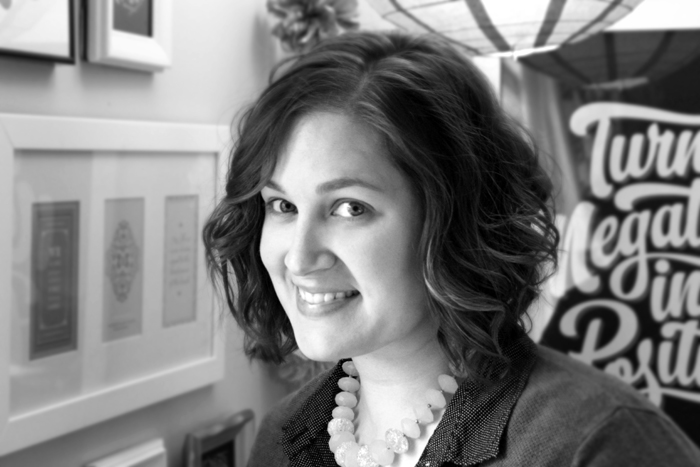
I recently had the pleasure of learning more about AIGA board member Lydia Kuekes, her passion for meticulous design and strategy that her full-time job at VisionPoint Marketing requires, and the inspiration behind her side business selling hand-lettered creations.
Many AIGA members strive for success on their main career path, but also have a need to see their other creative ideas through to fruition. Here, Lydia shares advice and experiences with her endeavors.
How long have you been working in the illustration field? What about UX? Which one were you involved with first?
I got my first job as a user experience designer in 2009, just after graduating with a Bachelor’s degree in Graphic Design from North Carolina State University. This job provided my first real-world experience creating web and app design and I was able to learn as I went. Around 2013—through AIGA—I started attending “Dine & Draw” meetings, and became obsessed with hand lettering. I’d always loved the look of it, but was afraid I wouldn’t be good at it. I was encouraged to give it a shot, so I did. I collected dozens of lettering books and watched every
Skillshare class I could get my hands on. As my work became more complex, I began incorporating more illustration into it. I’d always been artistic growing up, but it wasn’t until getting involved with the drawing group at AIGA that I allowed myself to use my drawing skills more regularly.
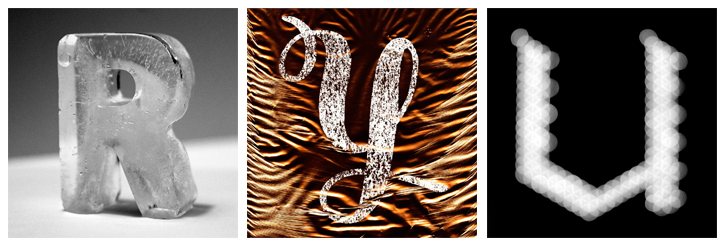
A few examples from Lydia’s Hybrid Type project.
I went back to school for my Master’s degree in 2014 and became interested in the intersection of hand and digital craft. I wanted to find ways to incorporate what I loved as a hobby to generate designs that clients desire. I spent my second year of graduate school studying how to merge the two in my thesis project called
Hybrid Type. Now I’m back in the industry as a UX designer at
VisionPoint Marketing, where our focus is on higher education.
One of my goals as a UX designer is to not only find that college or university client who might be open to using some custom lettering in their marketing materials, but also learn to incorporate the behavior of hand lettering and illustration into web and marketing design—a distinction that I wouldn’t have been able to make prior to graduate school.
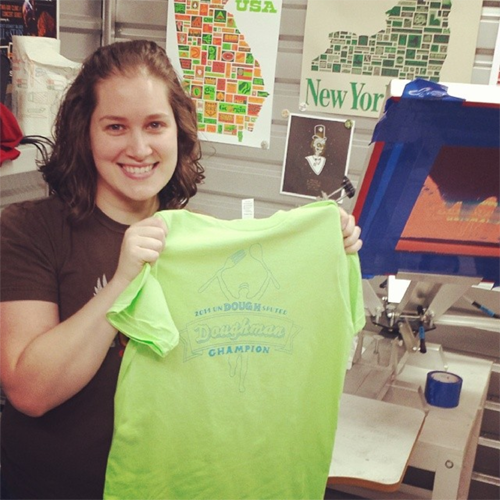
Lydia with one of her Doughman Race t-shirt designs.
When did you start to pursue professional work as an illustrator?
While I was still at my first job, I was learning screen printing and practicing my lettering skills as a hobby during my spare time. For several years I’d been lucky enough to work with the Doughman Race in Durham, designing T-shirts and identity assignments pro-bono for their charity runs. One year I mentioned that I’d been working on this handmade style, and would they be interested in giving that a try? They did, so I got to create a hand-drawn design for their shirts and then screen print them myself. That was a real turning point for me, and I started to put myself out there more for freelance work as a lettering artist and illustrator. Since then, I’ve been asked to create logos, shirts, chalk murals, wedding stationery, and even a 20-foot type mural at my current job. I also regularly appear as a vendor at some of the area’s best artisan markets, like Raleigh’s Handmade Market and Durham’s Patchwork Market, where I sell screen prints, block prints, and inkjet reproductions of my designs. I’ve even got a few wholesale designs scattered around town at various curio shops.
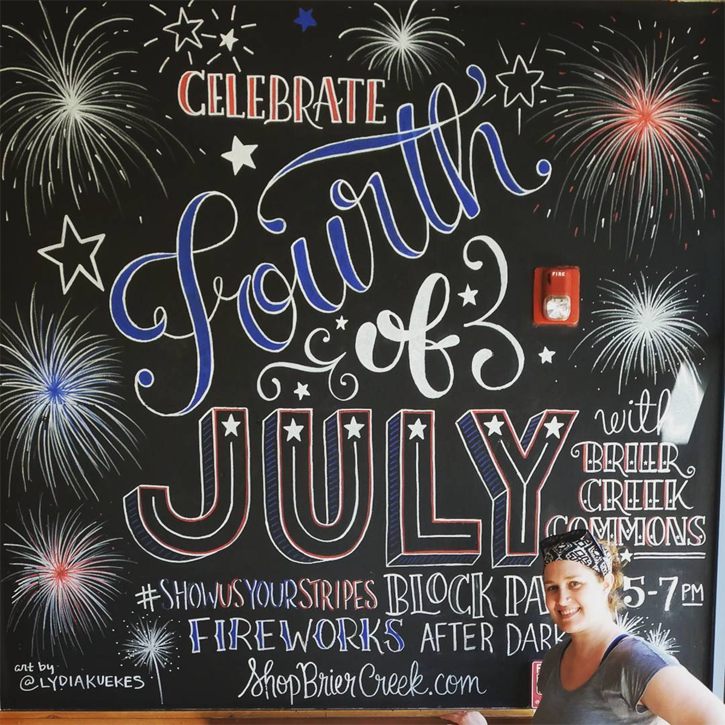
How does the creative process for your UX work differ from the way you approach illustration projects?
Usually my illustration work is self-initiated, and while I’m designing for an audience, I’m really just guessing about what they might like to see at someplace like a gift shop or a craft fair, so I just design what I like. That couldn’t be further from my UX work, which is carefully researched and conducted with a good bit of strategy to target a specific market.
However, the design principles I learned in school, such as working with a grid, establishing a proper hierarchy, proper letter spacing, contrast, and balance, certainly apply to both.
I think I’m a better lettering artist because of my graphic design training, and a better UX designer because of my artistic abilities.
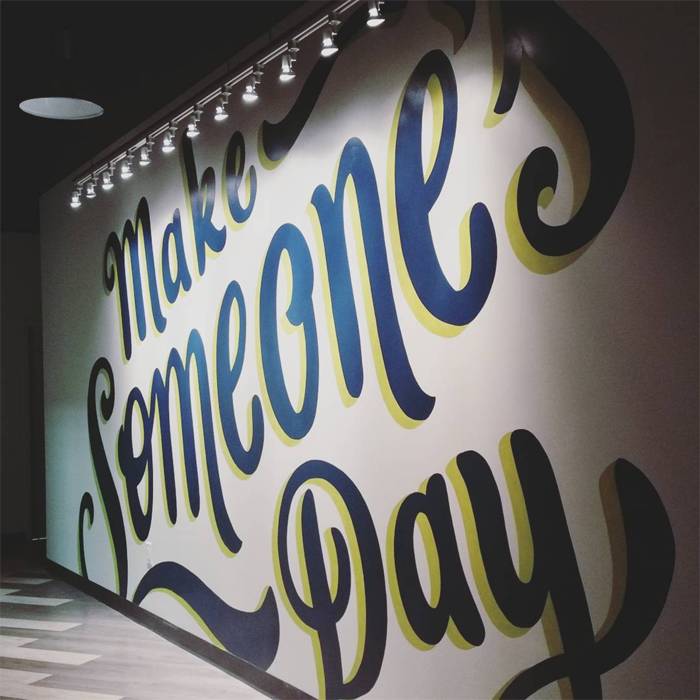
A type mural created for VisionPoint Marketing.
How do you balance time between your day job and your side projects?
That is the toughest part. I really just have to prioritize. Last year I sold at 12 craft markets. This year I’m aiming for 3-4. It’s tempting to try and attend as many markets as you can, because once you get your booth setup nailed down and enough work to show, it doesn’t really take much more effort to just keep showing up every chance you get. These markets are so frequent that it’s hard to create enough fresh work to stay interesting. So this year I’m focusing on fewer but bigger markets, to give me time to create new work between shows. This way I can still enjoy my free time by making more art and doing other things that I love; not just constantly planning for the next big show or sale.
What are the hardest sacrifices you’ve had to make to be able to maintain both gigs?
The only real sacrifice is sometimes feeling like two people. There’s buttoned-up, professional Lydia who loves the precision and strategy behind designing higher-ed websites, and wacky, impulsive Lydia who will stay up all night to finish a linoleum block carving that’s too exciting to put down. I think they feed each other, and for now, I think I’ve struck a nice balance. I also really, really, love to sleep and I’ve learned that some nights you just have to deal with 4 hours of sleep if you’re going to cover all of your bases. Another unfortunate sacrifice is often self-care beyond sleep—things like eating healthy and exercise. If anyone out there has figured out how to successfully juggle all that, please tell me how!
What is your advice to others who want to try a similar path?
Immerse yourself. Follow as many people you can on Instagram that do the kind of work you want to try, and like and comment on their work often. Go to conferences, and don’t be scared to talk to your design idols. This actually leads to pretty great professional relationships and friendships where you can reach out for feedback and advice.
I once sent type designer James Edmondson a sketch of a (two word!) lettering piece for feedback, and that kicked off a two-day, 11-email thread about how I could improve it, complete with links and even a sketch he had drawn over my image to show parts that needed to change.
All because I met him at an AIGA event and he welcomed that kind of request. The barrier to entry is much lower than you think. You just have to put yourself out there.
Anything new coming up for you that we should know about?
Yes! The first big show for me is actually this coming weekend, the
Handmade Market at Marbles Kids Museum in Raleigh. I’ll be there from 10-7 on Saturday,
May 13, selling my designs and trying not to spend all of my money! Look for me at the purple polka dotted table. At VisionPoint, I’m looking forward to my two first site launches since joining the team, but I can’t tell you more until they’re completed, stay tuned!
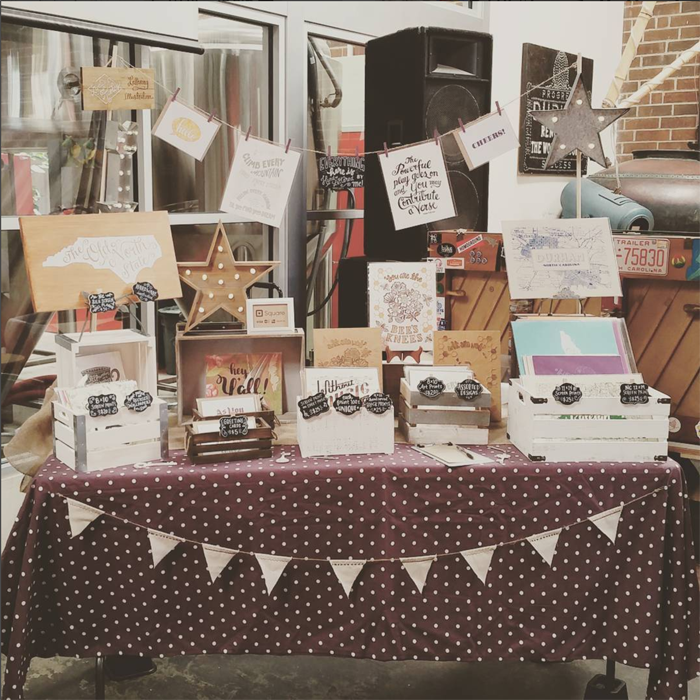
See more examples of Lydia’s work:
Instagram: @lydiakuekes
Lydiakuekes.com
Hybrid-type.com
Society6.com/lydiakuekes
 About the Author: Nancy C. Sampson is the creative entrepreneur behind The Nancydraws Shop, on Etsy.com, which offers art and greeting cards featuring quirky characters inspired by the cities of New York and Paris. Stay tuned, as a new resident of North Carolina, you never know when locally-based inspiration will strike!
About the Author: Nancy C. Sampson is the creative entrepreneur behind The Nancydraws Shop, on Etsy.com, which offers art and greeting cards featuring quirky characters inspired by the cities of New York and Paris. Stay tuned, as a new resident of North Carolina, you never know when locally-based inspiration will strike!
Instagram | Facebook | Linked In | Twitter | Website